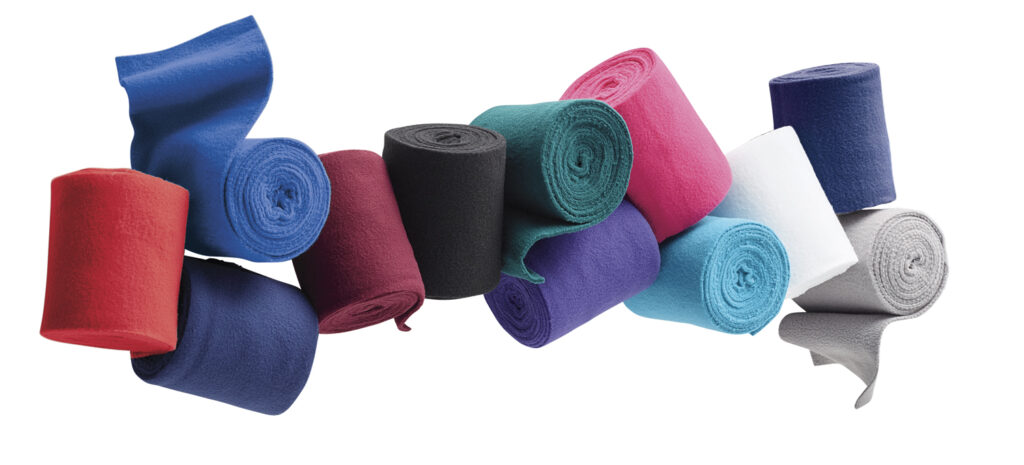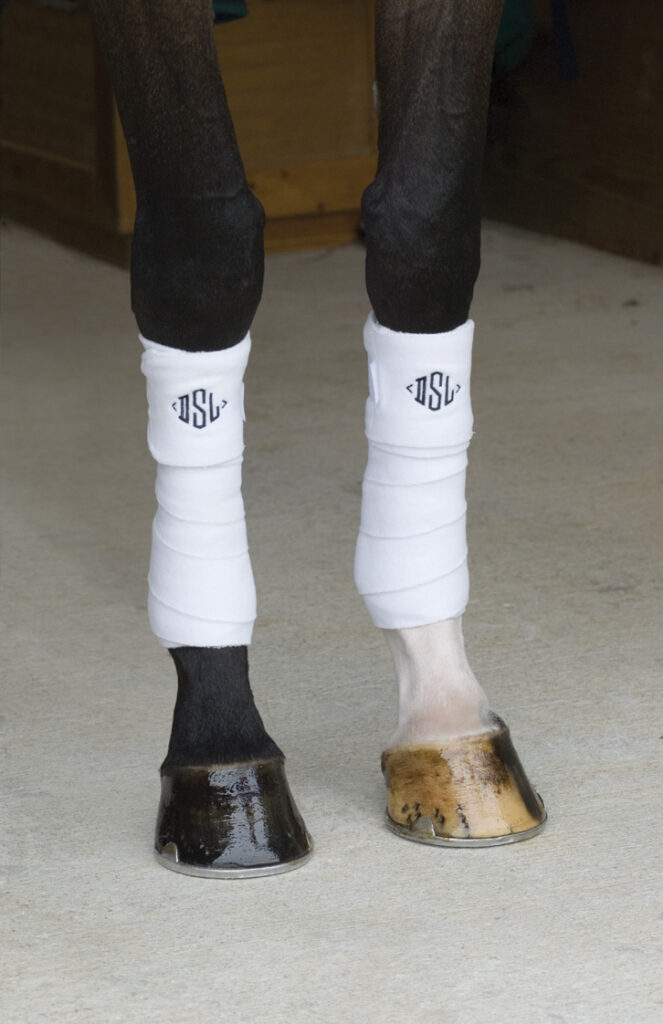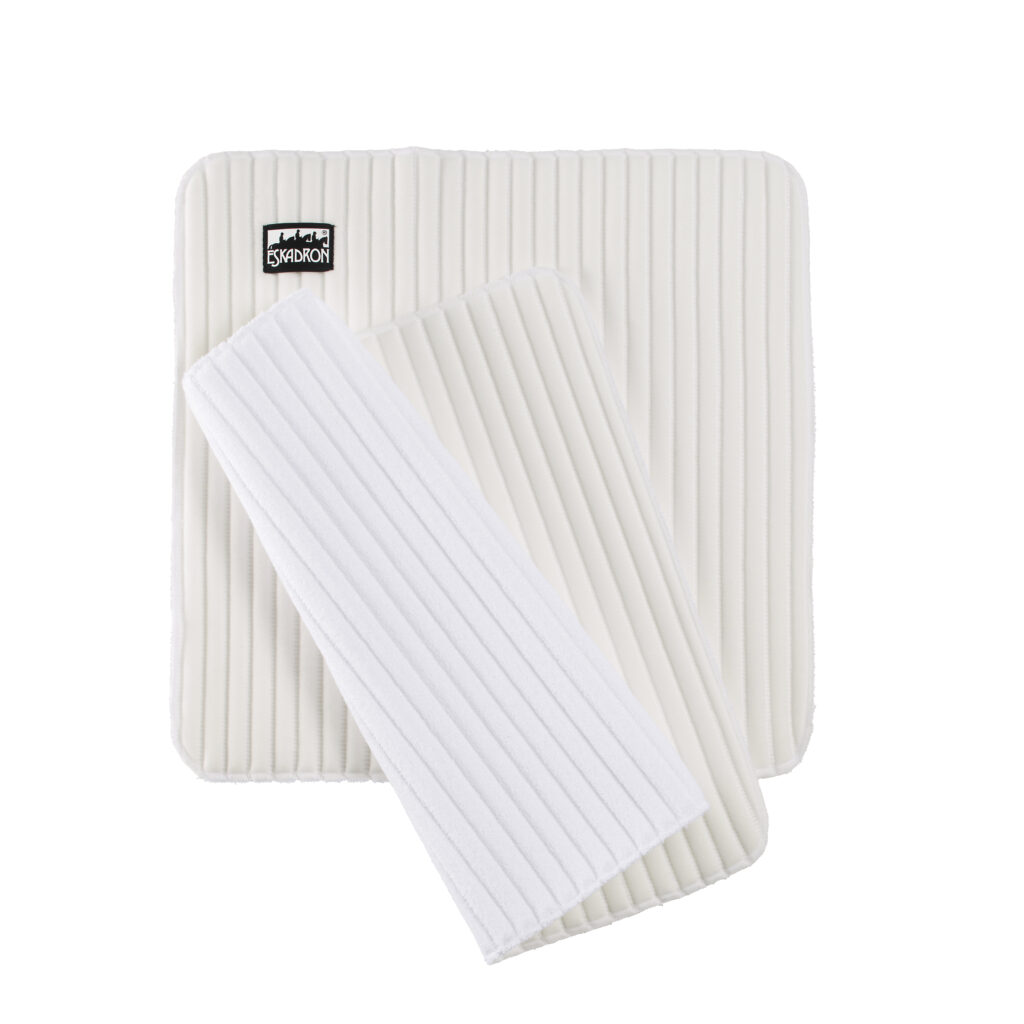
In March we provided an overview of two common types of wraps: standing wraps and shipping wraps. This month let’s discuss the use and benefits of exercise wraps.
An exercise wrap is made of a polo bandage or polo wrap, most correctly applied over an exercise liner. Exercise wraps help protect a horse’s lower front and hind legs from interference during work—when a horse’s own hoof strikes an opposing leg, causing a cut, bruise or splint.
The material of a polo bandage (generally 9 to 11 feet long and 4 to 4½ inches wide for horses) is synthetic fleece that is inherently cushiony, slightly stretchy and easily conforms to the horse’s lower limbs. Polo bandages secure with hook-and-loop fasteners.
While a polo bandage can be applied directly against a horse’s leg, a proper exercise wrap has an exercise liner applied to the leg first. This low-profile layer offers added protection from knocks without adding bulk. It also provides just enough padding to help protect against pressure points from the polo bandage. As an added benefit, most exercise liners are made of materials that wick moisture and promote airflow, which in turn helps keep tendons, skin and hair cool. Exercise wraps are used only while a horse is being ridden or lunged—never in turnout or in place of standing or shipping wraps.
Polo bandages are primarily sold in sets of four wraps. They are a traditional, inexpensive and long-lasting alternative to horse boots, easily machine washable and extremely quick to dry. White is the most traditional color, followed by black, but polo wraps can be found in every color of the rainbow and in the trendiest seasonal hues. Exercise liners also commonly come in sets of four.
Tips:
- If you have a new set of polo wraps, consider washing them once before you use them. Washing makes the wraps slightly easier to handle.
- Also, be sure your wraps are rolled tightly before you begin to wrap your horse’s legs. The tighter you roll your wrap, the easier it will be to apply to your horse.
Cautionary Notes:
- New to wrapping? Hands-on training from a knowledgeable instructor is a must for your horse’s safety. Wrapping of any kind must be done correctly to avoid common bandaging mistakes that can cause both temporary and irreparable damage.
- Exercise wraps should always be applied over dry, clean skin and hair, and they should be removed promptly after work.
- Stable bandages are not safe substitutions for fleece polo bandages and vice versa.
- Consult your horse’s veterinarian in the presence of any lower leg injury or unprecedented or chronic swelling/edema.
Shop our wide selection of horse leg wraps here.
Are you a leg wrapping pro? Share your photos with us on Instagram and Facebook by tagging @doversaddlery!



